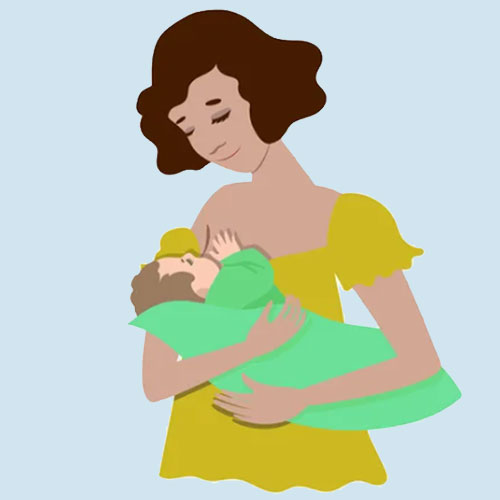
Did you know? Breastfeeding protects your baby from certain childhood infections and diseases like ear infections, sudden infant death syndrome (SIDS), type 2 diabetes and more.
Breastfeeding also has many benefits for the mother. It protects the mother by reducing the risk of having heart disease, postpartum depression, diabetes, and ovarian/breast cancer. Breastfeeding may help mothers lose weight after delivery.
Every mom and baby are different. Breastfeeding or formula feeding is a personal choice, no matter what your relatives, your friends, and/or your doctors say. You will have to decide what is best for you and your baby. Learn more about breastfeeding here, as you prepare for the arrival of your baby.
There are a lot of breastfeeding myths that come from cultural beliefs, personal experience biases, and health professionals’ recommendations. Here are some common myths about breastfeeding.
Myth: “Colostrum is bad and toxic”
Fact: Colostrum—or often called “liquid gold”—is the first milk your body produces after delivery. It looks different in color compared to traditional breast milk. It is thicker and it can come in many different shades of yellow, from deep gold to bright yellow to orange. This first milk is meant to be different because it fights diseases and bacteria around you and your baby when your baby first encounters the world after being out of the womb. Colostrum is rich in nutrients, antioxidants, and antibodies that build your baby’s immune system. Colostrum then will change to traditional breast milk within two to four days after your baby is born.
Myth: “I don’t think I will produce enough milk for my baby”
Fact: Almost all mothers make enough milk for their babies. Breastmilk production depends on the frequency of breastfeeding or pumping and how well the baby’s latching skills are. It is a “supply and demand” process. As your baby continues to breastfeed, your body will get the signal to increase milk production to meet your baby’s needs. To check if your baby is well fed, you can monitor these signs—the number of wet and dirty diapers in a 24-hour period and birth weight regained by 10 to 14 days old. Breastfeeding is not only the mother’s job, but it requires support from family and loved ones as well.
Myth: “I am sick, so I cannot breastfeed”
Fact: Bacteria and viruses do not transfer through milk. Your body is making antibodies to strengthen your immune system to fight off those bacteria and viruses. The antibodies will get transferred to your baby through your breastmilk to build their immune system. For example, if you have the flu, you may want to wear a mask while breastfeeding because bacteria and viruses can spread through the air. There are only a few health problems when breastfeeding is not recommended for the mother, such as HIV/AIDS and galactosemia. Additional information about these and other conditions is available here.
Resources:
Peterson C. All Those Breastfeeding Myths: What Can We Do?. Illinois Department of Human Services. Accessed September 6, 2022. https://multimedia.illinois.gov/dhs/DHS-All-those-breastfeeding-myths-090622.html.
Colostrum. Cleveland Clinic. https://my.clevelandclinic.org/health/body/22434-colostrum. Accessed September 15, 2022.
Breastfeeding Benefits. USDA WIC Breastfeeding Support. https://wicbreastfeeding.fns.usda.gov/breastfeeding-benefits. Accessed September 15, 2022.
